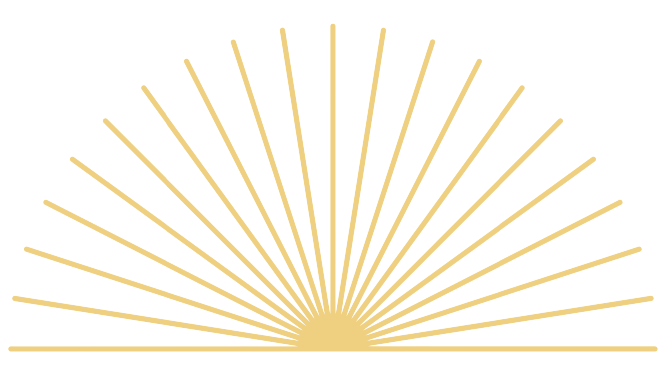Winning Strategies: Olympic Lessons to Drive L&D Success
As a former collegiate athlete, I have been so impressed by how the world has shown up to support women in the Olympics this year. As I’ve watched the interviews, plays, and TikTok videos, I couldn’t help but think about what we could learn from these amazing athletes as L&D professionals.
Keep reading for 6 ways we can bring the spirit of Olympic excellence to our learning and development initiatives.
#1 Lift Others Up
Probably one of the most talked-about photos from the Olympics this year will be Simone Biles and Jordan Chiles bowing to Rebecca Andrade.
They chose revolutionary kindness in competition and celebrated each other’s accomplishments. In an interview, Jordan mentioned, “I feel like being recognized is what everybody should do when it comes to somebody who's put in the work, put in the dedication.”
As L&D professionals, we need to remember that it is important to take time and celebrate the accomplishments of others because not only does it build a culture people actually enjoy being part of, but it also pushes everyone to be the best they can be.
#2 Have a Sense of Humor
One of my favorite athletes (on and off the field) this year has been Ilona Maher. Not only is she an absolute beast at rugby, but she’s also been a huge advocate for celebrating different body types in athletics and approaches life with a sense of humor. It’s her authenticity and humor that allow you to feel like you know her, like she’s a friend you could grab a croissant with.
As L&D professionals, we can harness that same sense of humor, humility, and authenticity to help connect and engage our audience with the initiatives and programs we build.
#3 Embrace Vulnerability in Leadership
Not to keep fangirling over Simone Biles, but I’m going to keep fangirling. What I admire about her is her openness and honesty about all her experiences—including the highs and the lows. Her courage in acknowledging challenges and building a team and toolkit for support has allowed her to overcome them and return even stronger.
From dealing with the “twisties” in the Tokyo Olympics to seeking therapy and bravely sharing her story about Nassar, she’s shown us that even the strongest among us can be vulnerable about our struggles.
As L&D professionals, it’s easy to assume that our strongest teammates don’t need support. However, when we don’t recognize that everyone, regardless of their job performance, is a human with needs, we risk burnout, decreased morale, and ultimately undermine the very success we depend on them to achieve.
When developing a plan, it’s crucial to adopt a holistic, human-centered approach if we want to see meaningful results.
#4 Encourage and Include Future Generations
I used to be a teacher, so I’ll always have a soft spot for encouraging the next generation to follow their dreams and be part of shaping their future. If you’ve been following Katie Ledecky, you know she’s an outstanding record-setting swimmer. You might also be aware of a young fan who nearly fainted when Katie waved to her from the stands.
Since then, Katie has stayed in touch with the girl and even FaceTimed her, saying, “Keep it up…I know you're a great swimmer. You’re gonna come beat me someday, I’m sure.”
Image By: Mariano Nocetti
Lately, I’ve noticed a lot of discourse online where boomers blame millennials, and millennials blame Gen Z, creating a cycle of negativity and shaming. What if instead, we got excited about the potential of other generations? What would work look like if we embraced this mindset?
We can start bridging these generational divides by having open conversations, incorporating mentorship programs, and providing more opportunities for collaboration.
#5 Be Courageous
It can be hard to do the right thing when you are worried about the backlash.
For Kimia Yousofi, years of relocating, training, and staying strong have given her a platform to fight for her rights and the rights of women. Despite women not being allowed to participate in sports in the boundaries of her homeland, and oppressive fear tactics used by the Taliban, nothing could not stop this athlete from competing for Afghanistan.
Even more, she has used her platform to send a message. The stakes are high but the message of hope these four words written on the back of her bib has the potential to rise higher.
In L&D and in any part of life, we always have a choice. We can do what is easy in the moment and stay silent, or we can ask ourselves the question, “what is my platform, and how can I use it to do what is right?”
#6 Celebrate Diverse Contributions
One of the most positive narratives surrounding the Olympics this year has been the acknowledgment of the diversity in size, shape, and skills among athletes.
Seeing this new generation of athletes openly defend their bodies rather than hide them or bend to societal molds is inspiring. It is also a testament to this year being the first time the games will have an equal number of men and women competing. All this was by design.
As L&D professionals, we can draw inspiration from this example in our approach to diversity and inclusion. Instead of trying to fit everyone into a mold, we have the opportunity to embrace and celebrating the unique contributions of each individual, creating environments where everyone feels valued and empowered.
Let us strive to foster a culture of inclusivity, where diverse perspectives and backgrounds are not only acknowledged but celebrated as vital to our collective success.
Incorporating these lessons from the Olympics into our L&D practices can transform how we connect with and support our teams. By embracing humor, lifting others up, recognizing humanity, encouraging future generations, and celebrating diversity, we can create a more engaged and empowered workplace.


